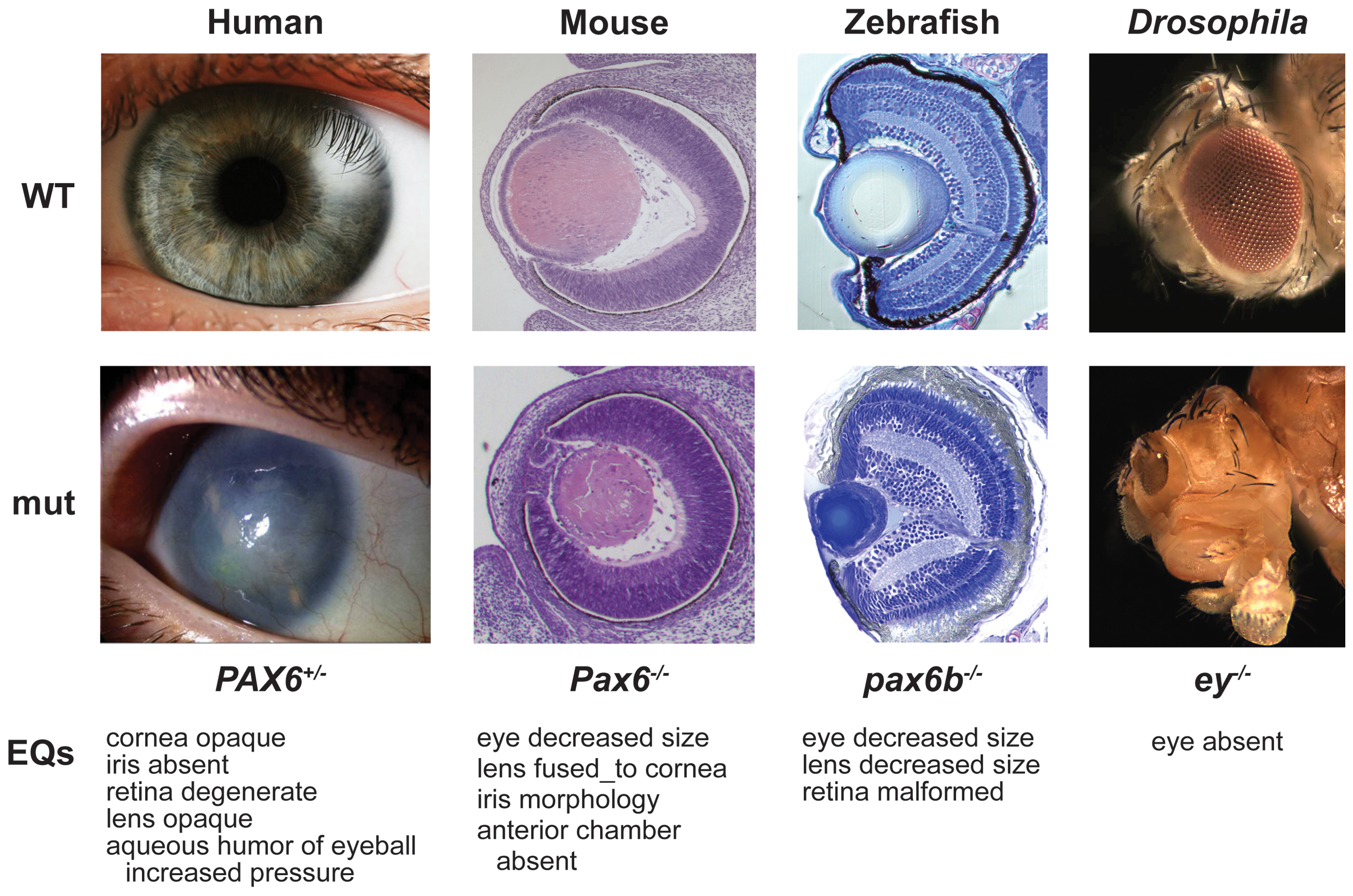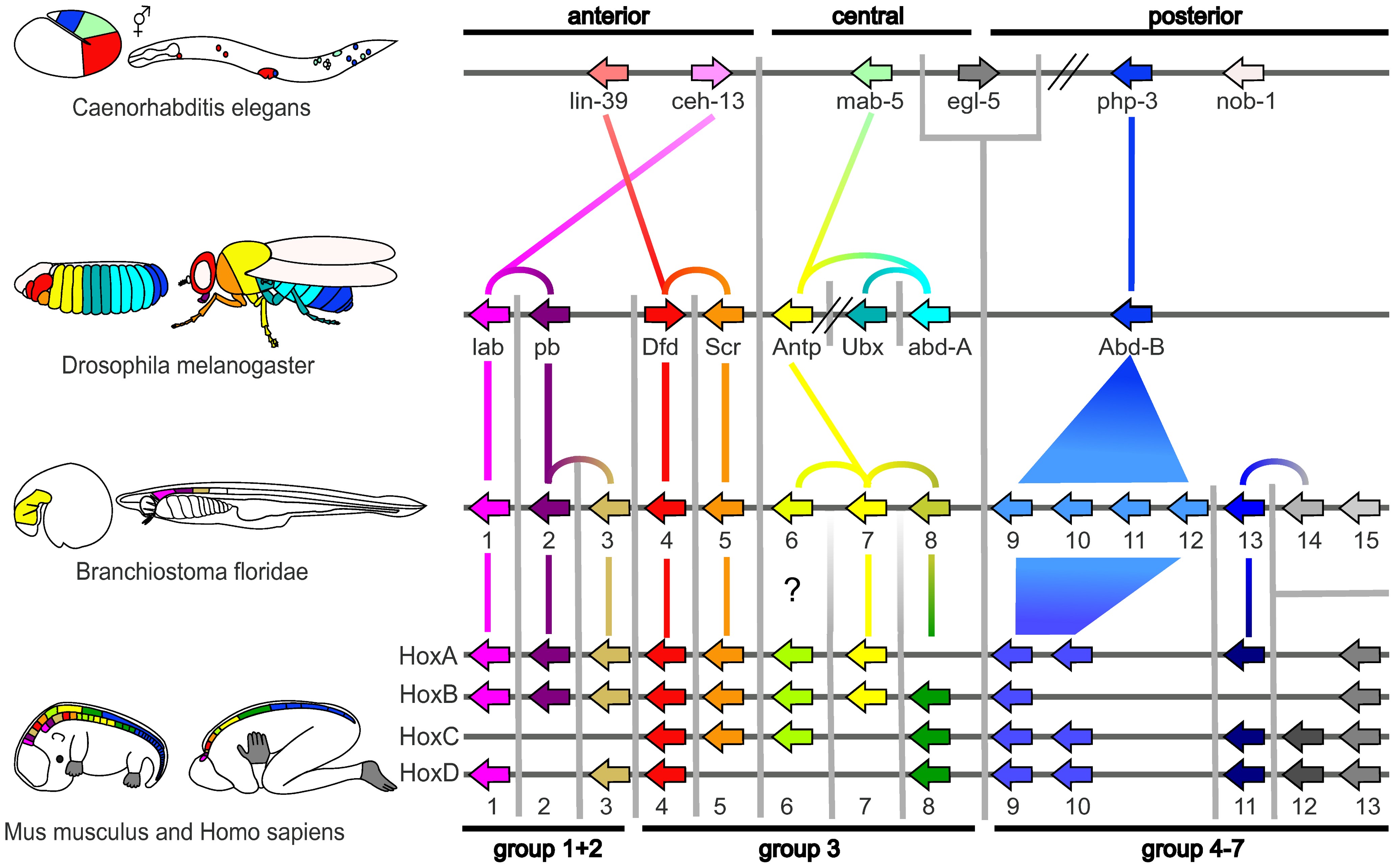Deep homology on:
[Wikipedia]
[Google]
[Amazon]
 In
In
 Geoffroy's homology theory was denounced by the leading French zoologist of his day,
Geoffroy's homology theory was denounced by the leading French zoologist of his day,
 In
In evolutionary developmental biology
Evolutionary developmental biology, informally known as evo-devo, is a field of biological research that compares the developmental biology, developmental processes of different organisms to infer how developmental processes evolution, evolved. ...
, the concept of deep homology is used to describe cases where growth and differentiation processes are governed by genetic mechanisms that are homologous and deeply conserved across a wide range of species
A species () is often defined as the largest group of organisms in which any two individuals of the appropriate sexes or mating types can produce fertile offspring, typically by sexual reproduction. It is the basic unit of Taxonomy (biology), ...
.
History
In 1822, the French zoologist Ătienne Geoffroy Saint-Hilaire dissected acrayfish
Crayfish are freshwater crustaceans belonging to the infraorder Astacidea, which also contains lobsters. Taxonomically, they are members of the superfamilies Astacoidea and Parastacoidea. They breathe through feather-like gills. Some spe ...
, discovering that its body is organised like a vertebrate's, but inverted belly to back (dorsoventrally):
 Geoffroy's homology theory was denounced by the leading French zoologist of his day,
Geoffroy's homology theory was denounced by the leading French zoologist of his day, Georges Cuvier
Jean LĂ©opold Nicolas FrĂ©dĂ©ric, baron Cuvier (23 August 1769 â 13 May 1832), known as Georges Cuvier (; ), was a French natural history, naturalist and zoology, zoologist, sometimes referred to as the "founding father of paleontology". Cuv ...
, but in 1994, Geoffroy was shown to be correct. In 1915, Santiago Ramon y Cajal mapped the neural connections of the optic lobes of a fly, finding that these resembled those of vertebrates. In 1978, Edward B. Lewis helped to found evolutionary developmental biology
Evolutionary developmental biology, informally known as evo-devo, is a field of biological research that compares the developmental biology, developmental processes of different organisms to infer how developmental processes evolution, evolved. ...
, discovering that homeotic genes regulated embryonic development in fruit flies.
In 1997, the term deep homology first appeared in a paper by Neil Shubin, Cliff Tabin, and Sean B. Carroll, describing the apparent relatedness in genetic regulatory apparatuses which indicated evolutionary similarities in disparate animal features.
Difference from ordinary homology
Whereas ordinary homology is seen in the pattern of structures such as limb bones of mammals that are evidently related, deep homology can apply to groups of animals that have quite dissimilar anatomy: vertebrates (withendoskeleton
An endoskeleton (From Ancient Greek áŒÎœÎŽÎżÎœ, Ă©ndon = "within", "inner" + ÏÎșΔλΔÏÏÏ, skeletos = "skeleton") is a structural frame (skeleton) â usually composed of mineralized tissue â on the inside of an animal, overlaid by soft ...
s made of bone
A bone is a rigid organ that constitutes part of the skeleton in most vertebrate animals. Bones protect the various other organs of the body, produce red and white blood cells, store minerals, provide structure and support for the body, ...
and cartilage
Cartilage is a resilient and smooth type of connective tissue. Semi-transparent and non-porous, it is usually covered by a tough and fibrous membrane called perichondrium. In tetrapods, it covers and protects the ends of long bones at the joints ...
) and arthropods (with exoskeleton
An exoskeleton () . is a skeleton that is on the exterior of an animal in the form of hardened integument, which both supports the body's shape and protects the internal organs, in contrast to an internal endoskeleton (e.g. human skeleton, that ...
s made of chitin
Chitin (carbon, C8hydrogen, H13oxygen, O5nitrogen, N)n ( ) is a long-chain polymer of N-Acetylglucosamine, ''N''-acetylglucosamine, an amide derivative of glucose. Chitin is the second most abundant polysaccharide in nature (behind only cell ...
) nevertheless have limbs that are constructed using similar recipes or "algorithms".
Within the metazoa, homeotic genes control differentiation along major body axes, and pax genes (especially PAX6) help to control the development of the eye and other sensory organs. The deep homology applies across widely separated groups, such as in the eyes of mammals
A mammal () is a vertebrate animal of the class Mammalia (). Mammals are characterised by the presence of milk-producing mammary glands for feeding their young, a broad neocortex region of the brain, fur or hair, and three middle e ...
and the structurally quite different compound eye
A compound eye is a Eye, visual organ found in arthropods such as insects and crustaceans. It may consist of thousands of ommatidium, ommatidia, which are tiny independent photoreception units that consist of a cornea, lens (anatomy), lens, and p ...
s of insects
Insects (from Latin ') are hexapod invertebrates of the class Insecta. They are the largest group within the arthropod phylum. Insects have a chitinous exoskeleton, a three-part body (head, thorax and abdomen), three pairs of jointed ...
.
Similarly, hox gene
Hox genes, a subset of homeobox, homeobox genes, are a gene cluster, group of related genes that Evolutionary developmental biology, specify regions of the body plan of an embryo along the craniocaudal axis, head-tail axis of animals. Hox protein ...
s help to form an animal's segmentation pattern. HoxA and HoxD, that regulate finger and toe formation in mice, control the development of ray fins in zebrafish; these structures had until then been considered non-homologous.
There is a possible deep homology among animals that use acoustic communication, such as songbirds and humans, which may share functional versions of the FOXP2 gene.
In cancer stem cells
In modern daybiology
Biology is the scientific study of life and living organisms. It is a broad natural science that encompasses a wide range of fields and unifying principles that explain the structure, function, growth, History of life, origin, evolution, and ...
, the depth of understanding deep homology has evolved into focusing on the molecular and genetic mechanisms and functions rather than simple morphology. Cancer stem cells (CSCs) are a population of cells within a tumor that have the ability to self-renew and differentiate into different cell types, similar to normal stem cell
In multicellular organisms, stem cells are undifferentiated or partially differentiated cells that can change into various types of cells and proliferate indefinitely to produce more of the same stem cell. They are the earliest type of cell ...
s. The stem cell theory of cancer suggests that there is a subpopulation of cells, referred to as cancer stem cells, that have certain characteristics that make them unique among other types of cells within a cancer. The traits that are included in CSCs are that they multiply indefinitely, are resistant to chemotherapy
Chemotherapy (often abbreviated chemo, sometimes CTX and CTx) is the type of cancer treatment that uses one or more anti-cancer drugs (list of chemotherapeutic agents, chemotherapeutic agents or alkylating agents) in a standard chemotherapy re ...
, and are proposed to be responsible for relapse after therapy.
Life cycle of cancer
The unicellular life cycle of cancer and Entamoeba is uniquely similar, and thus contradicts the molecular phylostratigraphic theory for the origin of cancer. This deep relationship between the two cell systems is supported by the "amoeba model", which provides a greater understanding of the biology of cancer from the evolutionary perspective. The G + S life cycle of Entamoeba is the closest common ancestor than compared to any other life cycle of unicellular organisms. Similarly, both cell systems, amoeba andcancer
Cancer is a group of diseases involving Cell growth#Disorders, abnormal cell growth with the potential to Invasion (cancer), invade or Metastasis, spread to other parts of the body. These contrast with benign tumors, which do not spread. Po ...
, use the deep homologous G + S gene module that was evolved by a common ancestor. Some parallels that they share are too close for coincidence including:
* A reproductive asexual germ-line capable of forming germ-line stem cells (GSCs, referred to as CSCs in cancer) and a somatic cell line without reproductive GSC function;
* Germ and soma cells that proliferate through asymmetric and symmetric cell cycles and can interconvert by transitioning from germ to soma (GST) and from soma to germ (SGT); both processes are referred to as MET and EMT in cancer;
* Oxygen-sensitive germlines that irreversibly lose their reproductive function due to irreparable DNA damage caused by excess oxygen;
* DNA damage repair (DDR) mechanisms to repair DNA replication
In molecular biology, DNA replication is the biological process of producing two identical replicas of DNA from one original DNA molecule. DNA replication occurs in all life, living organisms, acting as the most essential part of heredity, biolog ...
and polyploidization defects and maintain genomic integrity of nascent GSCs/CSCs;
* DNA DSB repair mechanisms via MGRS and PGCC structures, with or without homologous cell fusion.
MGRSs are also known in medical terms as âpre-existing Polypoid Giant Cancer Cells (PGCCs)â and are frequently observed in untreated cancers. In cancer, the reproductive germ-line cycle starts with a precursor cell. This cell will then polyploidize within a cell envelope. This cancer germ-line undergoes a process of development that is similar to the Entamoeba germline. A significant trace of deep homology can be found in mammalian germ-line stem cells. Based on a previous hypothesis, the germ-line is the common ancestor in somatic stem cell lineages. Daughter GSCs are the only stem cells that have the capability of passing genetic information throughout generations.
Algorithm
In 2010, a team led by Edward Marcotte developed analgorithm
In mathematics and computer science, an algorithm () is a finite sequence of Rigour#Mathematics, mathematically rigorous instructions, typically used to solve a class of specific Computational problem, problems or to perform a computation. Algo ...
that identifies deeply homologous genetic modules in unicellular organisms, plants, and animals based on phenotype
In genetics, the phenotype () is the set of observable characteristics or traits of an organism. The term covers the organism's morphology (physical form and structure), its developmental processes, its biochemical and physiological propert ...
s (such as traits and developmental defects). The technique aligns phenotypes across organisms based on orthology (a type of homology) of genes involved in the phenotypes.
See also
*References
{{reflist, 30em Evolution by phenotype Evolutionary biology Taxonomy (biology) Phylogenetics Evolutionary developmental biology